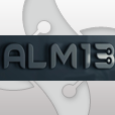setACL custom action
0 Comments
[ + ] Show comments
Answers (11)
Please log in to answer
Posted by:
anonymous_9363
17 years ago
If you install SetAcl.exe as a file through the MSI you should use "Execute Program From Destination" instead....for the uninstall part. Remember to condition the CA: IF REMOVE~="ALL"...and place it above the RemoveFiles action.
BTW, for file permissioning, I prefer to add SetACL in the Binary table and run it like that because, if you run it after InstallFinalize, it can potentially take F O R E V E R to run, since it has to permission every file in the tree. If you run it after CreateFolders, files copied into those folders can inherit the folder's permissions. For larger apps, the time difference can be significant.
Posted by:
anonymous_9363
17 years ago
Posted by:
MARIN
17 years ago
Posted by:
FrankSpierings
17 years ago
Posted by:
MARIN
17 years ago
Posted by:
AngelD
17 years ago
If you install SetAcl.exe as a file through the MSI you should use "Execute Program From Destionation" instead.
Set the component holding the file as permanent using the "msidbComponentAttributesPermanent" attribute bit on the component. This will prevent it from getting removed during uninstall as it seems that you are calling the file through the custom action after the file as been removed.
Set the component holding the file as permanent using the "msidbComponentAttributesPermanent" attribute bit on the component. This will prevent it from getting removed during uninstall as it seems that you are calling the file through the custom action after the file as been removed.
Posted by:
FrankSpierings
17 years ago
Marin,
You should not use an immediate custom action to modify the system, see the best practice.
http://msdn2.microsoft.com/en-us/library/aa372409.aspx
Specifically: http://msdn2.microsoft.com/en-us/library/aa367851.aspx
Also, if you use InstallShield you could use the support directory mechanism.
http://helpnet.installshield.com/robo/projects/HelpLibDevStudio9/SetupFilesView.htm
You should not use an immediate custom action to modify the system, see the best practice.
http://msdn2.microsoft.com/en-us/library/aa372409.aspx
Specifically: http://msdn2.microsoft.com/en-us/library/aa367851.aspx
Also, if you use InstallShield you could use the support directory mechanism.
http://helpnet.installshield.com/robo/projects/HelpLibDevStudio9/SetupFilesView.htm
Posted by:
nheim
17 years ago
Posted by:
anonymous_9363
17 years ago
@Ian: Nice idea with applying the permission to the folders and let inheritance do the rest!Born out of the experience of waiting for almost an HOUR for permissioning on WebLogic's BEA web server to complete...LOL...
What was even more hilarious was when I picked up the job for doing a second update to that product, I noticed straight away that another scripter had switched it BACK to permissioning after the file copy because "that's the way it is in the corporate template. It'll never get past QA." No amount of explaining about permission inheritance, nor detailing the multitude of packages I'd released which had already passed QA, would make him change his ways. Idiot. There's a nice quote which someone uses on another (unrelated) forum I belong to:
"Never argue with an idiot: they drag you down to their level and beat you with experience."
Posted by:
jmcfadyen
17 years ago
Posted by:
Coriolus
17 years ago
I always use SECEDIT to modify my file/registry perms. I create my security template on my reference system and then add the secedt.sdb and *.inf security template file to my package then create a custom action to run it jsut before the InstallFinalize phase. If you do this you don't really have to add any 'foreign' files to the system although doing so is no big deal.
 Rating comments in this legacy AppDeploy message board thread won't reorder them,
Rating comments in this legacy AppDeploy message board thread won't reorder them,so that the conversation will remain readable.





